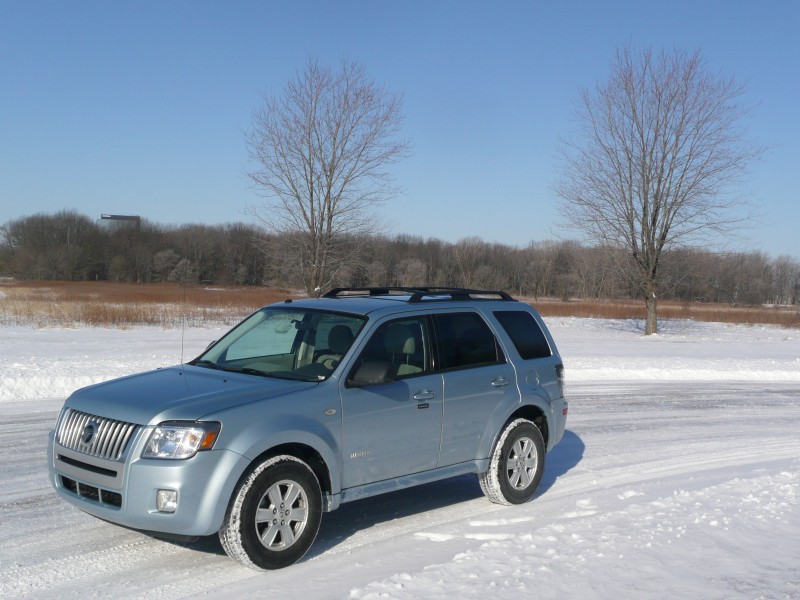

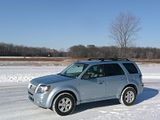
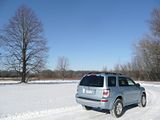
One of the more disappointing cars that I tested in 2008 was the Swiss market Ford Maverick. Saddled with a rather feeble 2.3 litre 4 cylinder engine and a recalcitrant manual gearbox, it was no fun to drive, and it was also endowed with a very low rent interior of the sort that even the Americans are gradually managing to eliminate from their offerings. Although that test car was relatively “new”, it appeared to have been manufactured some considerable time before the test and was effectively an obsolete model. Early in 2007, a revised version of the US alter egos of this car, the Ford Escape and Mercury Mariner were launched, with “edgier” and more aggressive styling, and a completely new interior, along with some mechanical changes. These cars have never been exported to Europe, but they are widely available in the rental fleets of America, so it was with some interest that I collected a 2008 model Mercury Mariner, fitted with the more potent 240bhp V6 engine, interested to see if what is now quite an old basic design is competitive in the market.


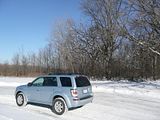
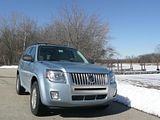
Starting with the looks, then. The 2008 Model Year facelift made significant changes here, with the objective not just of freshening what was by then a 7 year old design, but also to make the car look “tougher”. Whether the rather brash chrome-effect grille on the Escape model achieved that goal, or whether it is just that bit vulgar is probably a matter of personal taste. In the case of the Mercury, the Mariner retained the grille design of vertical bars, but the grille itself was extended downwards into the front bumper area, a styling trend that has since been repeated on all subsequent Mercury facelifts, such as with the Sable and the Milan. The rear lights and bumpers were also changed, but the overall vehicle profile is still quite identifiable with the design that was first seen in 2000.

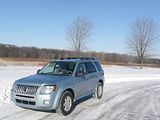
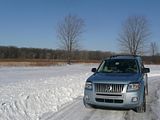
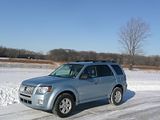
Inside the facelift brought about a more radical, and more necessary change. A completely new dashboard design and cabin architecture was fitted. Sadly, although from a distance it looks like a significant improvement, closer inspection reveals otherwise. The pale beige interior of the test car probably does the trim no favours, but it is not hard to determine that this is still “old school” Ford Motor Company, with some very poor quality and very hard plastics used. The design does not help, with lots of rectangular shapes and big areas of plastic. Fit and finish of the different components of the dash is not brilliant, either. There are some major differences between this dash and the old one. Not only does this car sport a foot operated parking brake, but it has also reverted to having a single column stalk. Thus operation of the wipers is achieved by twisting a sleeve on the stalk. You have to go through all the intermittent settings to get continuous wipe. There is one particularly irksome feature, which is that the release for the foot operated parking brake is mounted down so low on the dashboard that you would almost be better off trying to use your foot to operate it. Many of the interior styling details are very similar to the Sable – with the same centre console layout, the same gearlever, the same style adopted for the steering wheel and the instrument graphics, but whereas the effect in the Sable was quite pleasing, and looked “slightly premium” – a market position at which Mercury is aimed – in the Mariner, it all just looks too low rent.
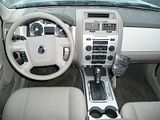
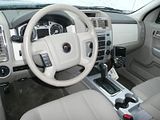

One of the frustrations with the Maverick was its 2.3 litre 4 cylinder engine. That motor has in any case been consigned to history, with the fitment from 2009, of a more powerful 2.5 litre engine. The test car had the optional 3.0 litre V6 engine, which develops 240bhp. On firing the engine, there is a far more pleasant note, with the distinct sound of 6 cylinders bursting into life, and it does endow the Mariner with a decent turn of speed. Even in this application, it is probably little better than “sufficient”. As my test started in a blizzard and involved driving in snow, slush and then on the frozen consequences of this, as well as some cleared and dry roads. it was not possible to test the ultimate performance in any meaningful way. All I can say is that if the car is revved hard, the engine noise becomes very gruff, but it does deliver reasonably well. This version of the Mariner has an automatic gearbox, with no manual selection available. It shifts seamless between the gears. No-one ever buys an SUV for its handling prowess, but after the alarm of the frankly scary Explorer, bigger brother to this car, I was delighted to find no issues in hustling this car around the sweeping freeway curves of the interstate system around the Metropolitan Chicago area, where the test took place (don’t be fooled by those Alabama plates!), and once the snow was ploughed and the roads had dried, a certain gusto was feasible rather than merely inviting trouble.
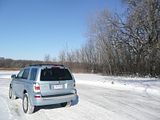

The steering has not certainly had the magic touch of Parry-Jones and Ford Europe’s engineers, but it was decently weighted and reasonably positive. No issues with the brakes, which seemed well able to stop the car, again unlike the Explorer or the previous model Ford Taurus. The parking brake is operated with the foot, and is something which will be ignored by most drivers, I am sure, especially when they realise that they have virtually to scratch their ankle to reach down low to the manual release lever set alongside the bonnet release in the very bottom of the dash. The concrete sectioned roads of Chicago are perhaps not the best test for quietness, as every car I have ever driven in the area struggles with the ridges, the joins in the sections and some very weird resonance from the surface (its advantage is that it drains well and a few hours after the snow stopped, it was bone dry), and Mariner was no exception. On lesser roads, the ride seemed quite compliant, and with the exception of road noise, the refinement levels were perfectly adequate.
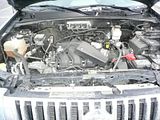
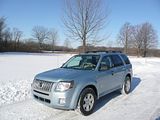
An SUV like this one, even one which the Americans class as “small” is all about practicality, and here the Mariner is well up to par. Up front, there is a deep cubby between the front seats, a number of smaller places to hold cell phones, coins for freeway tolls and the obligatory cup holders, and these are complemented with not overly generously sized door bins and a really rather meagre glove box, which is neither wide nor deep. Considering the rest of the dash architecture, there must be an awful lot of air-bag space, or simply fresh air behind that slab sided dash. Ample space for rear seat passengers, on the asymmetrically split folding rear seat is provided and there is what could only be classed as an average sized boot. As is usual with US rental cars, no load cover is provided, but the locating lugs are in evidence, and this would be both welcome and necessary as there is otherwise no out of sight stowage available at all. Access to the luggage area can be achieved either by lifting the entire large, and quite heavy tailgate, or by lifting just the rear window, though doing this means that there is a significant drop for anything being so deposited in the boot.
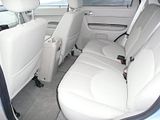
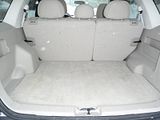
Having handed the car back to Mr Hertz, I am left to ponder my conclusions. For sure this car is far better than the Maverick that I had in Switzerland. The V6 engine alone ensures that conclusion. Is it good enough in what is quite a contested market, though? Sadly, I don’t really think it is. Although I quite like the external styling, the interior is still way below par. The 2008 model Sable that I tested last autumn shows that the Ford Motor Company can do far better than this in a moderately priced car. Dynamically, nothing really stood out as noteworthy – good or bad. There’s nothing so bad that you could not live with the Mariner, but I can’t help think that if you wanted a car in this class any of the RAV4, Nissan Rogue, Kia Sportage and even the outgoing Hyundai Tucson might prove a more satisfying vehicle.






















